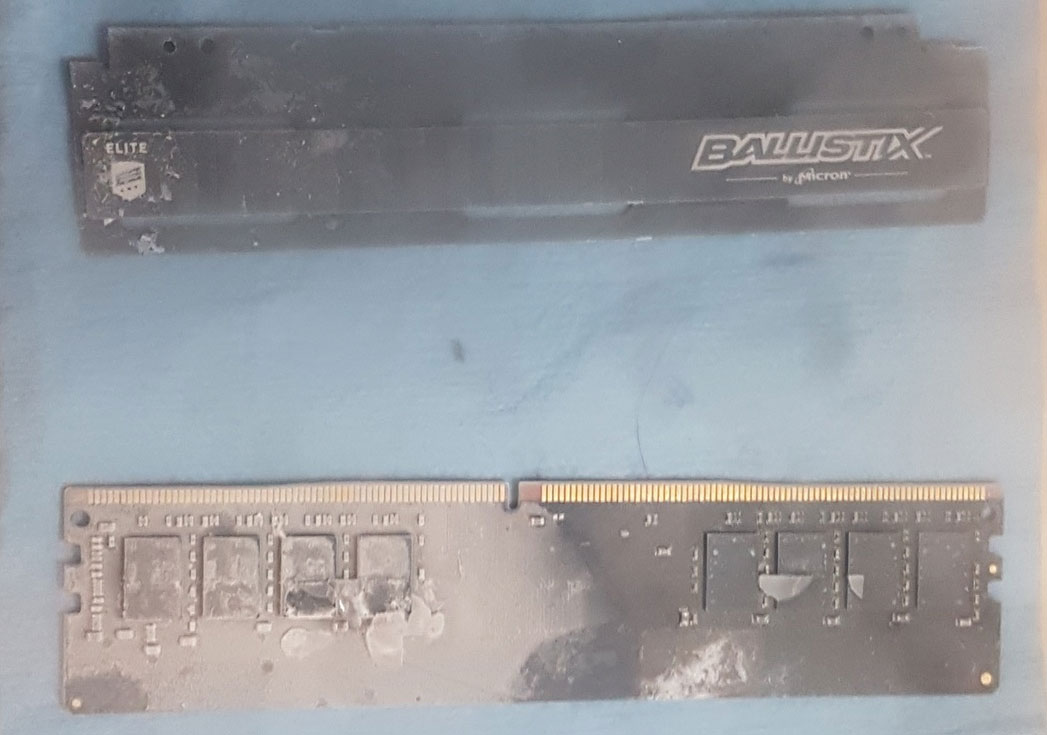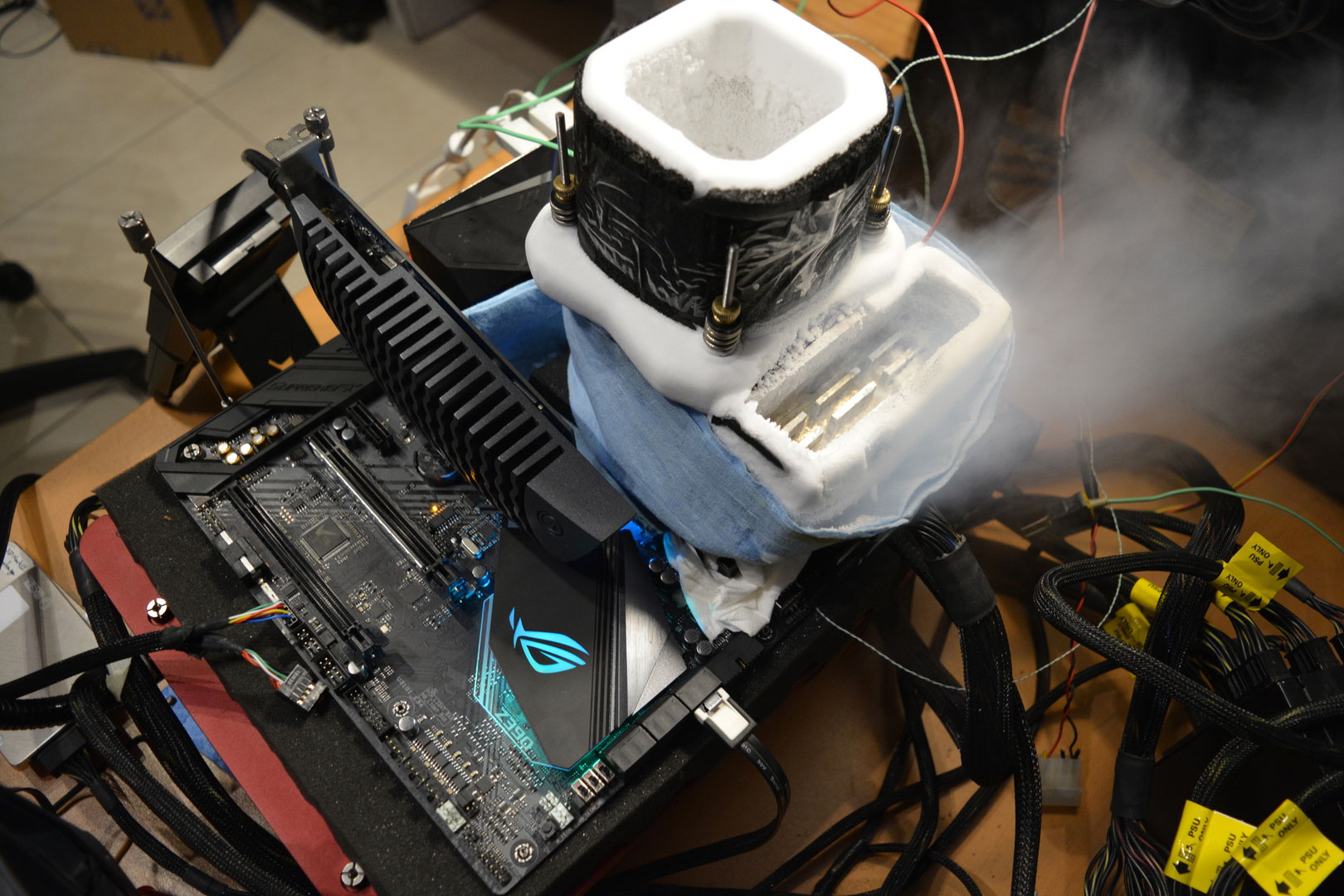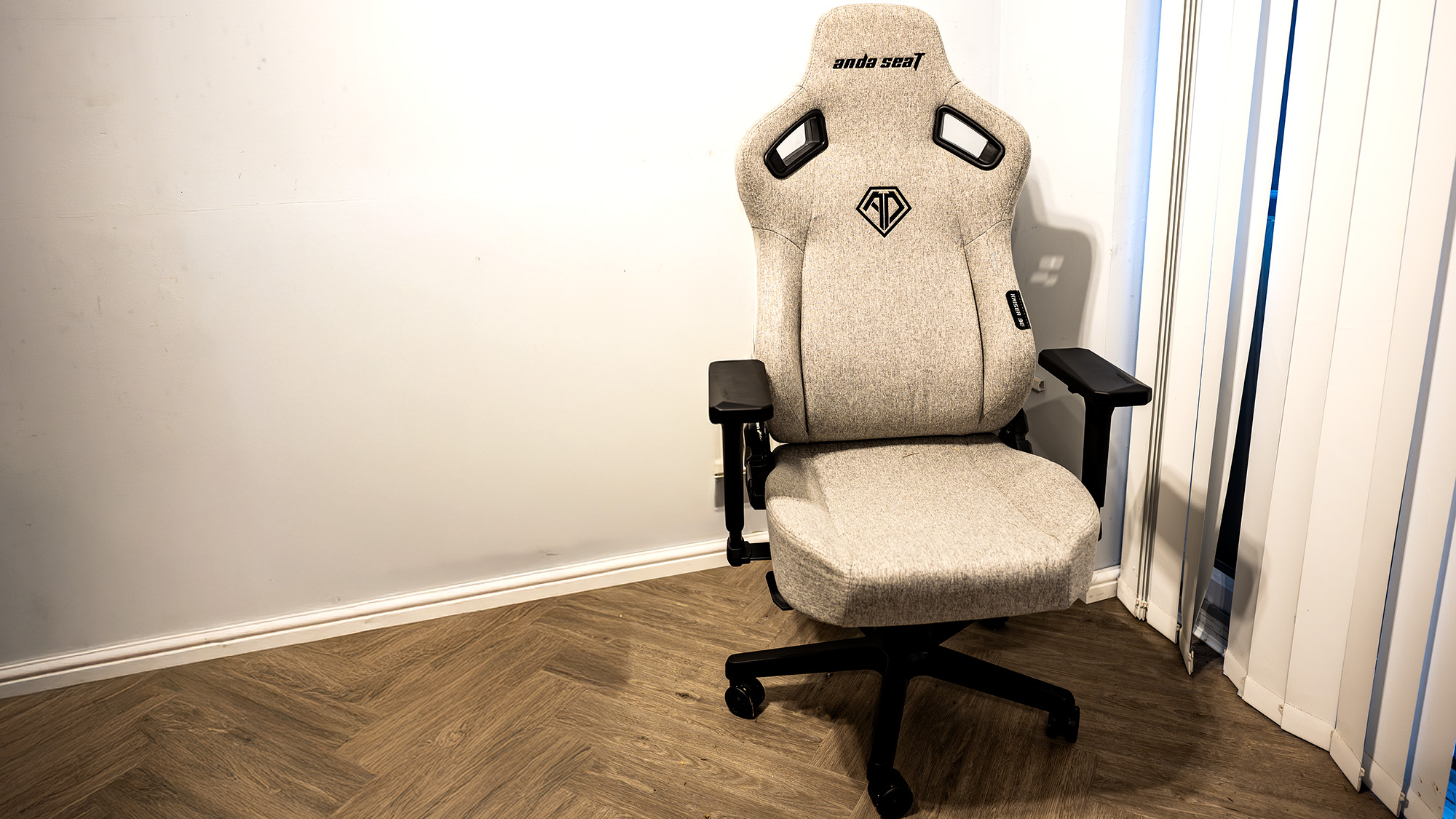Here’s what PC memory looks like after setting a world speed record at 5,726MHz
Micron memory took a bath in liquid nitrogen to set a new RAM frequency record.
A professional overclocking team (yes, those exist) took a kit of Micron memory, bathed it in liquid nitrogen, and proceeded to hit a record-setting frequency, which now sits at 5,726MHz. Micron was quick to celebrate the achievement.
"We did it. We hold the belt. Ballistix, Micron's gaming memory brand, is now the official overclocking world record holder," Micron said.
Hitting that kind of ridiculous speed is not easy and requires a combination of experience and the right parts. The former was supplied by Stavros Savvopoulos and Phil Strecker from Overclocking Gaming Systems, a couple of veteran overclockers who had high praise for Micron's memory.
"We were blown away by how surprisingly easy it was to overclock these Ballistix Elite DDR4 3600MT/s modules," Savvopoulos said. "Other modules we’ve overclocked can be temperamental and need to train at temperatures lower than the one required for stability; but we didn’t experience that with Micron’s E-die, which scaled much better with both extreme voltages and temperatures. Overall, it was easy enough to call the whole experience plug and play!"
Records are meant to be broken, of course, but it seems that Micron is in a good position to remain at the top. How so? Our friends at Anandtech recent reported that Samsung is discontinuing its B-die memory chips that are found in some of the fastest and best DDR4 memory kits, including those used for extreme overclocking.
Depending on how that plays out, Micron's E-die chips could emerge as the new gold standard in high-frequency kits. Just as impressive, the kit that was used for this record is the same one that Micron sells to the public.
"Yes, this record is a big, big, (big, big) deal to us here at Ballistix. But we care just as much about how we earned the top mark. We’re proud that we were able to use the same CAS latency—CL24—used by most of the previous record holders. In addition, we set the record using the same production module of the Ballistix Elite 3600 available to gamers today," Micron said.
Keep up to date with the most important stories and the best deals, as picked by the PC Gamer team.
In case you're wondering, the previous record was 5,634MHz, obtained using an Adata kit. Also earlier this year, HyperX celebrated hitting a then-record 5,608MHz frequency with its Predator memory.
Micron's RAM topped the previous record by 92MHz, which is an impressive jump. It will be interesting to see if anyone hits 6,000MHz before DDR5 takes hold.
Paul has been playing PC games and raking his knuckles on computer hardware since the Commodore 64. He does not have any tattoos, but thinks it would be cool to get one that reads LOAD"*",8,1. In his off time, he rides motorcycles and wrestles alligators (only one of those is true).




